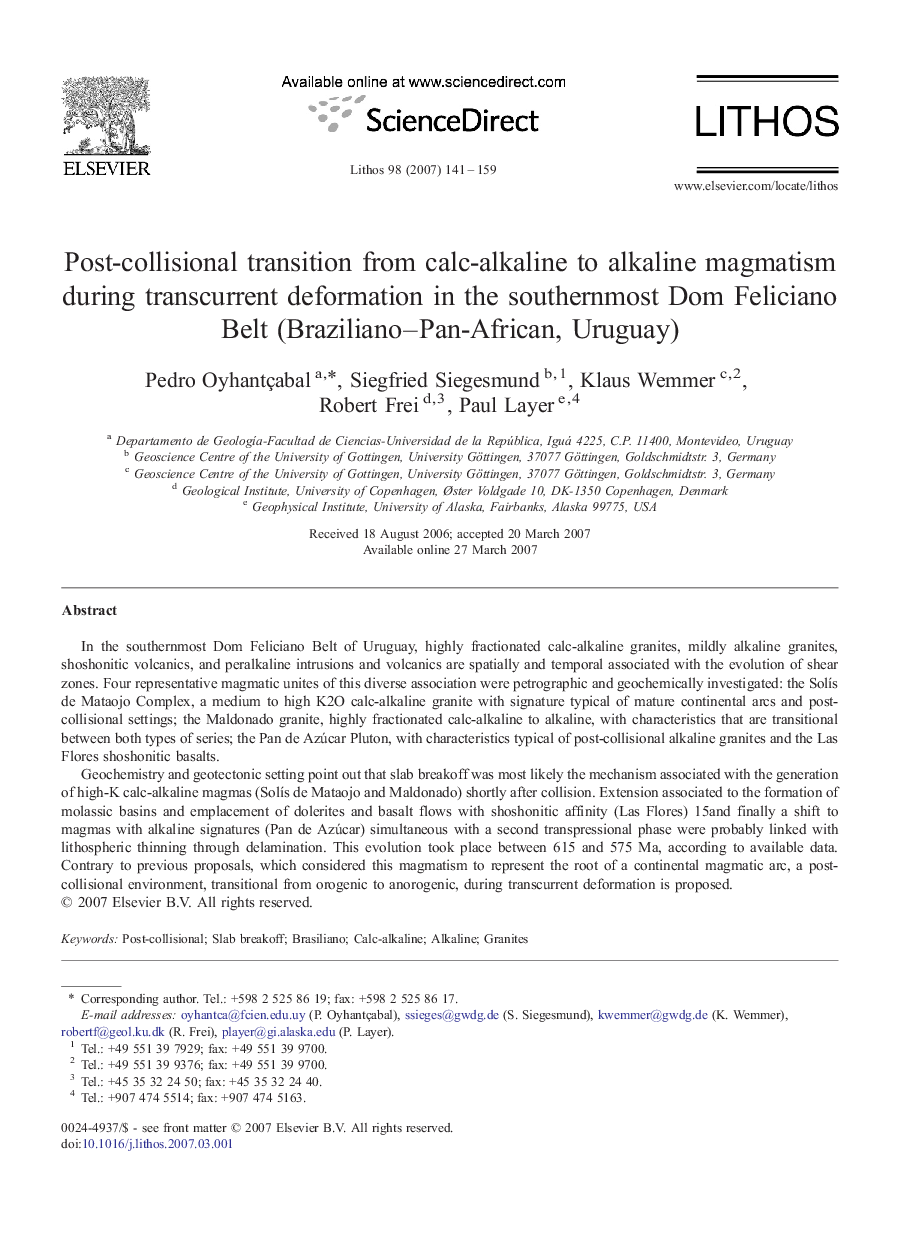| Article ID | Journal | Published Year | Pages | File Type |
|---|---|---|---|---|
| 4717773 | Lithos | 2007 | 19 Pages |
In the southernmost Dom Feliciano Belt of Uruguay, highly fractionated calc-alkaline granites, mildly alkaline granites, shoshonitic volcanics, and peralkaline intrusions and volcanics are spatially and temporal associated with the evolution of shear zones. Four representative magmatic unites of this diverse association were petrographic and geochemically investigated: the Solís de Mataojo Complex, a medium to high K2O calc-alkaline granite with signature typical of mature continental arcs and post-collisional settings; the Maldonado granite, highly fractionated calc-alkaline to alkaline, with characteristics that are transitional between both types of series; the Pan de Azúcar Pluton, with characteristics typical of post-collisional alkaline granites and the Las Flores shoshonitic basalts.Geochemistry and geotectonic setting point out that slab breakoff was most likely the mechanism associated with the generation of high-K calc-alkaline magmas (Solís de Mataojo and Maldonado) shortly after collision. Extension associated to the formation of molassic basins and emplacement of dolerites and basalt flows with shoshonitic affinity (Las Flores) 15and finally a shift to magmas with alkaline signatures (Pan de Azúcar) simultaneous with a second transpressional phase were probably linked with lithospheric thinning through delamination. This evolution took place between 615 and 575 Ma, according to available data. Contrary to previous proposals, which considered this magmatism to represent the root of a continental magmatic arc, a post-collisional environment, transitional from orogenic to anorogenic, during transcurrent deformation is proposed.
